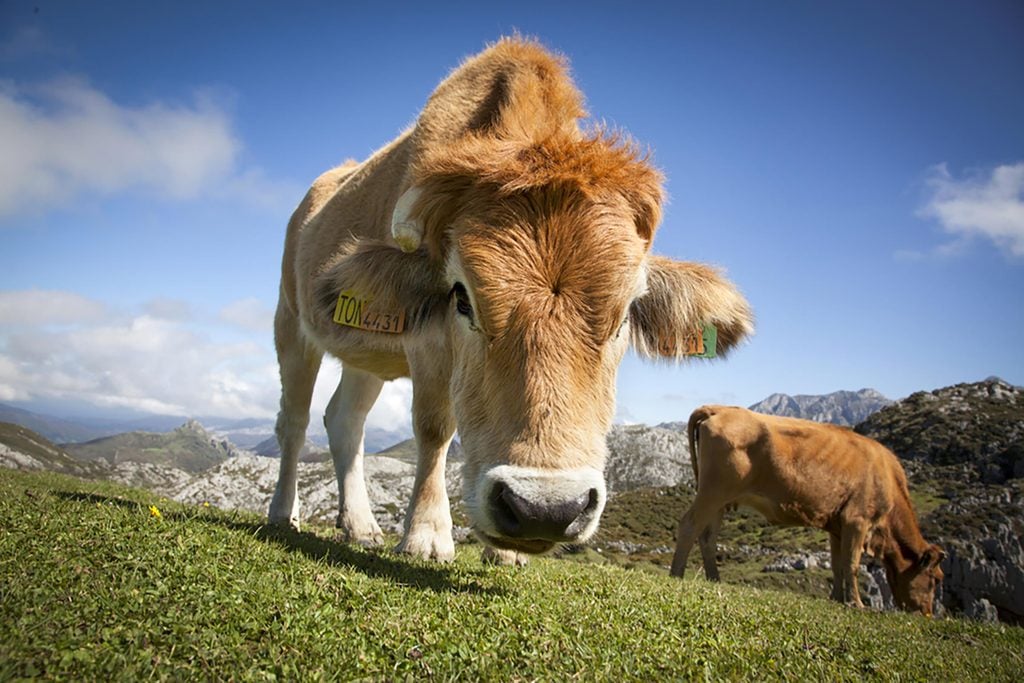Bought Grass-Fed Beef Recently? You’ll Want to Read This
Updated: Jun. 14, 2017
That label might not mean what you think.

If you’ve noticed pricey beef labeled “grass-fed” in the grocery store, you might wonder if it’s worth the extra money.
There are tons of great reasons for wanting to eat grass-fed beef. For one thing, it’s more natural for the cows, says Libby Mills, MS, RDN, LDN, FAND, spokeswoman for the Academy of Nutrition and Dietetics. Most farmers feed their cattle corn or grains, but cows would prefer grass if left to their own devices, she says.
“If an animal is grass-fed, it means they have been able to graze on their natural habitat for food … and be allowed to, in some degree, roam free in this environment,” says Mills. “It’s a pretty stress-free life.”
That grass-fed beef could be better for you, too. Farmers use grain-based diets to (literally) beef cows up fast, so those meats tend to be fattier than grass-fed ones. “In addition to being grass-fed, the animal was allowed to roam on the range—they have been active,” says Mills, “whereas [in] a feed lot, animals are pastured and unable to move around.”
Plus, a 2010 study in Nutrition Journal found that grass-fed meats could have more healthy omega-3s, vitamins A and E precursors, and cancer-fighting antioxidants.
So why would anyone not buy grass-fed beef?
Well, the label could be misleading. The USDA’s Agricultural Marketing Service used to have a formal definition when verifying producers as “grass-fed.” To label its meat “grass-fed” through that agency, a producer would need to meet all the standards outlined.
The AMS suggested in 2002 that guidelines would require 80 percent of animals’ diets to be foraged. But after pushback, the agency created stricter rules in 2006. In a 2007 revision, AMS specified an animal’s diet would need to be “solely from forage” like grass and hay to earn its label. Auditors visited the facility to make sure farms followed through.
But in January 2016, the USDA took those guidelines away.
Now, the AMS doesn’t have the right to give meat a “grass-fed” label. Instead, producers just send documents to the USDA’s Food Safety and Inspection Service. The FSIS looks those papers over, without ever stepping foot on the farm, so it’s all on the honor system.
The USDA stopped letting the AMS audit farms because without the specific right from Congress, “AMS does not have the authority to define labeling standards and determine if marketing claims are truthful and not misleading,” according to the USDA. Learn more about misleading food labels.
The USDA says “nothing” has changed since the AMS stopped reviewing the label claims. And that could be true. Going through AMS was always voluntary—producers could still have gone straight to FSIS for certification. Still, going through AMS’s process showed credibility, and with FSIS, producers can create their own standards.
These days, a “grass-fed” or “grass-fed and grain finished” label could mean a cow did indeed eat grass at some point—just not for its whole life, says Matthew Buck, a consultant for nonprofits like Food Alliance. “‘Grass-fed’ is a slippery claim,” he tells Business Insider, “because every cow eats grass for some portion of its life.”
The trick is to look for “grass finished” or “100% grass-fed.” There’s no ambiguity around those labels, so you know just what you’re getting. Find out which other food claims you should pay attention to.
You could also look for grass-fed meats verified by a third party such as the Food Alliance or American Grassfed Association, both of which do on-site inspections.
Or, even better, you could go straight to the source, says Mills. “When you’re able to purchase local, able to talk with that producer of meat and know your farmer … you have a better chance of understanding how that animal was raised,” she says. Some small farms have their cattle grass-feed but don’t go through the verification process because it costs money. But by asking directly, you’ll find out exactly what you’re getting.
If you don’t have access to any of those options, you’re still better off with beef that was partially grass-fed than not at all, says Mills.
“Some combination between grain-fed and grass-fed could be a healthy compromise because the animal still gets its natural environmental food, but at the same time it could save space and expense at the farmer’s side,” she says. “It’s always weighing that balance between what’s good for the environment versus what’s going to have the greatest production for the least cost.”